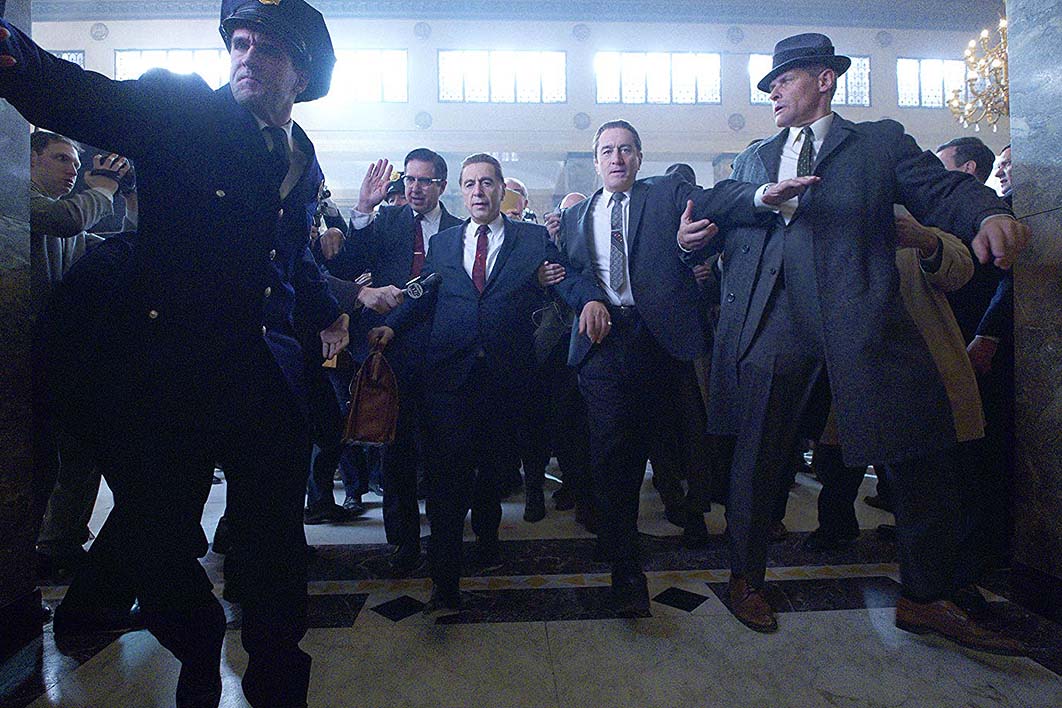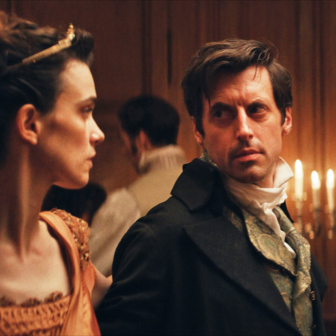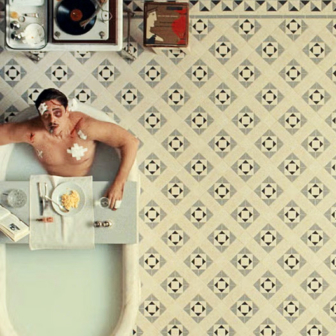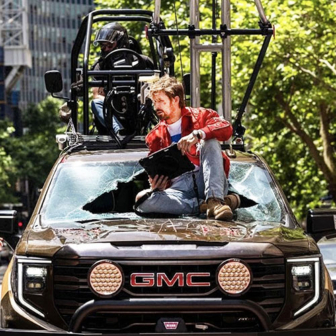“It’s about the eyes,” says Martin Scorsese, talking about the digital process he’s used to de-age Robert De Niro, Al Pacino and Joe Pesci in The Irishman. Running three-and-a-half hours, this third gangster epic reunites Robert De Niro (now seventy-six), Al Pacino (seventy-nine) and Joe Pesci (seventy-six) to make the case that it was convicted mobster Frank Sheeran — the Irishman — who assassinated Jimmy Hoffa, the notoriously corrupt boss of the Teamsters union.
It’s a huge tale of corruption and betrayal, of power and mob influence penetrating American politics over decades and generations. Scorsese and De Niro explored the same theme brilliantly in Goodfellas (1990) and again in Casino (1995). Who can forget Joe Pesci’s hysterical, gyrating dance in Casino, spinning like a top at the news of Jack Ruby’s assassination of Lee Harvey Oswald?
The mob wanted Cuba and its luxurious casinos back. Certain interests felt really pissed off when the Bay of Pigs invasion was bungled, and more so when Bobby Kennedy, chief counsel for a Senate investigating committee, went after the Teamsters instead. The disappearance and presumed assassination of Jimmy Hoffa in 1975 is another part of the puzzle of gangster capitalism in action.
How to bring together these actors in their seventies for one last great outing together? De Niro was the driver. He wanted the story told because it comes from the communities he and Scorsese grew up in. He sees the tale as relevant now: he has made no secret of his view that Donald Trump is both corrupt and incompetent. He doesn’t use words like gangster capitalism. Others might.
The actor came across “I Heard You Paint Houses”, Charles Brandt’s book based on end-of-life interviews with Mafia hitman Sheeran, soon after it was published in 2004. Brandt’s version is contested, particularly by the stepson of Chuckie O’Brien, once an aide to Hoffa, who is shown in the film as the driver who took the Teamsters’ boss to his last appointment. Jack Goldsmith, a retired law professor, has long pursued a quest to clear his late stepfather’s name. He claims that Sheeran gave different accounts of Hoffa’s assassination to various investigators and, when he talked to Brandt during his last years, was in pursuit of a book deal.
The Irishman covers Sheeran’s career as a hitman and Teamster official, the deaths for which he claimed responsibility, and the conflicts in the Teamsters union when Hoffa, finally out of prison, wanted to take back control. The prize was the Teamsters Pension Fund, skimmed by Hoffa and his associates and used by the mob to launder money.
De Niro read the original story and persuaded Scorsese, who swung behind it as producer; Steven Zaillian (The Gangs of New York) wrote a script. With Hoffa’s body never found, the case is still open. Legal wrangles slowed things down, the actors kept ageing, and the script was put aside.
Then the director of photography, Rodrigo Prieto, a youngster in his fifties who had worked twice before with Scorsese, suggested that the digital animation techniques being developed at Industrial Light and Magic were progressing sufficiently to “de-age” the three leads — De Niro as Sheeran, Pacino as Hoffa, and Pesci as Sheeran’s first mob patron, Russell Bufalino — and enable them to play the key roles right down the decades.
Scorsese’s reference to “the eyes” is actually shorthand. The eye itself has no expression: in humans, its expression comes from the interaction of forty-three facial muscles surrounding it. That’s a lot of interaction for digital animators to conjure with. Finally in production in 2017, the film spent another year in post-production.
So how does it look on the screen?
Digital animators talk about something called the Valley, or “the uncanny valley.” That’s where digital animation gets so close to the original that it becomes disconcerting or ghostly or downright creepy. Tom Hanks in the children’s film The Polar Express was a good example.
To my eye, The Irishman avoids that effect. Just. It enables some great performances, and the closer we get to De Niro, Pacino and Pesci’s real ages, the more compelling they become. The last acts of betrayal are as Shakespearean as anything De Niro and Scorsese have done together. With all the other masters of craft working on the film — The Band’s Robbie Robertson as music director, providing Scorsese’s trademark rock music flourishes; Thelma Schoonmaker doing the editing — the film clips along.
But the youthful and middle-aged flashbacks are disconcerting. It is as though different portrait painters were all assigned to capture the same person across multiple sittings. Put this in a structure of insistent flashbacks and the kind of lighting and angles used to evoke memories, and there are times when I wasn’t sure whom I was watching.
An older actor moves differently from a young one. Prieto has described having added boxy clothing at times to conceal that fact. The result is sometimes disconcerting in a different way. While we’re not in an uncanny valley, the film sometimes appears to be switching between multiples performing in parallel universes. Have these younger versions acquired powers to replicate themselves, slightly off kilter, in different pasts?
In the end I concluded these flashbacks were not so much Scorsese as Scuola di Scorsese.
I hung in because it’s a fascinating story. Time and again, the actors bring it back. Hoffa’s tantrums — nobody does a tantrum like Al Pacino. Florid barely covers it. De Niro’s Sheeran, his face a mask of practised indifference, confronted by a daughter’s rejection, finally fraying as he attempts to reconcile the ageing Hoffa and his supplanters. The wiliness of Pesci’s Bufalino. The near-wordless accusations of Sheeran’s daughter Peggy, beautifully played by Anna Paquin.
The Irishman is a film to be seen, and seen in a cinema. It is one of a batch of auteur films commissioned or acquired by Netflix, Amazon, Apple, Disney and is other streaming services (as well as Stan, which is now popping up in cinemas). They are there at the moment because we are in the Oscar nominations period, and films must have cinema releases to be nominated. Noteworthy among them are The King, David Michôd and Joel Edgerton’s take on Hal and Falstaff, reviewed here last week by my colleague Brian McFarlane; and Judy and Punch, Mirrah Foulkes’s comically bizarre reworking of Punch and Judy for the age of #MeToo. Commissioned by Vice, with Mia Wasikowska in the lead and Damon Herriman playing Mr Punch, Judy and Punch is an out-of-time fable made in Australia, and releases on 21 November.
Nonfiction can make for very good drama. In cinemas we have The Report, a political drama with good guys and bad guys, written and directed by Scott Z. Burns, who produced An Inconvenient Truth and went on to write a number of the Bourne thrillers. This one is chilling: it’s based on Daniel J. Jones’s book-length account of five years working for the US Senate committee investigation of the CIA’s program of torturing political prisoners after 9/11.
Adam Driver plays Jones, and Annette Bening plays the powerful, politically adroit Democrat committee chair Dianne Feinstein. The film’s real subject matter is the tussle between the politicians and the agencies, particularly the CIA, which attempted to derail, defuse and redact what the committee uncovered. Its report named and detailed the experiences of many more torture victims than journalists had identified, uncovering the fact that these torture sessions were not only more extensive than the “waterboarding” leaked to news media, and involved many more torture techniques, but also provided no useful information whatsoever.
The CIA’s suppression of these internal reports makes the real drama of the film. Ultimately, a 400-page summary was published in 2014, but only after Feinstein and one of the Republicans on the committee decided to read it into the Senate record just before the committee’s composition changed. Feinstein secured the support of just one Republican senator on the committee; a second, the late John McCain, abstained.
Mostly sober in tone, The Report is undeniably good drama, essentially because the events it dramatises — including the CIA’s hacking into the committee’s computers, a mini-Watergate of sorts — are so appalling. The early scenes of waterboarding are brief yet dramatically essential: a reminder of the necessity of maintaining the outrage. (I did find myself watching some of this through my fingers.) In the role written for Daniel Jones, there are no particular heroics, beyond persistence becoming obsession. Driver, immensely watchable, plays him straight.
Particularly intriguing is Annette Bening, now sixty-one, aged without technology or fuss to play Feinstein, now eighty-six. The long-serving senior senator from California, noted for her political skill and for playing her cards close to her chest, has been criticised more than once in the Washington intelligence wars. She has also drawn Republican ire for revealing, then retracting, pre–Edward Snowden, details of the National Security Agency’s surveilling of American citizens’ phone records. It took considerable political finesse to get the CIA’s torture activities documented, and out.
This, then, is The Report, not so much thrilling as chilling. It’s long — two hours’ worth — and it is thorough. It is a reminder of the worth of good, patient public service. In the age of redaction, it’s essential viewing. •




